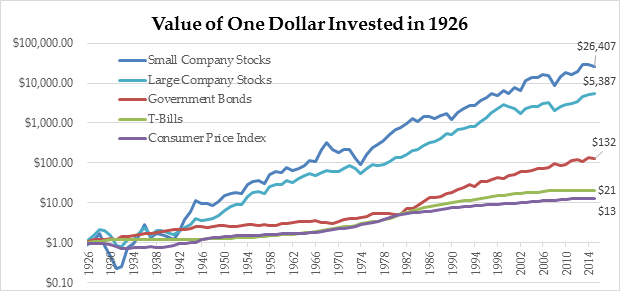Fundamentals of Fixed Income


Accounting
At Yeske Buie, we use a few bond funds to obtain exposure to fixed income investments for our Clients. While fixed income may not be the most exciting piece of your portfolio, it is a necessary part of a sound investment strategy. The more “exciting” pieces of your portfolio are the stocks which typically receive much of an investor’s attention due to their role in creating higher returns as a percentage of the entire portfolio. However, fixed income positions, or bonds, play an equally important role because of their ability to help reduce the volatility of returns and the emotional volatility that comes with investing. They do this by diversifying your portfolio to create a buffer that provides a safety net and by earning a steady return through long-term holding strategies to reduce the overall risk in your portfolio.
But, what is a bond and how do we use bond funds in your portfolios?
Bonds represent an obligation for the borrower to pay a set amount of interest (current income) and to repay the original borrowed amount (principal) at the loan’s maturity date. Individual bonds can be selected to increase your exposure to the fixed income market, however there is a more efficient way to obtain the same exposure. The creation of bond mutual funds have made it easier for an individual to own a piece of hundreds of different fixed income obligations. With bond funds, the investor loses the fixed interest payment, however they greatly increase their exposure and therefore enhance the diversification of their overall portfolio. Bonds are inherently subject to interest rate risk and not all asset classes react the same way to interest rate movement. The ability to increase exposure of fixed-income positions through a bond fund ultimately allows for the smoothing of volatile returns in a changing economic environment. The chart below shows the performance of stocks in comparison to bonds if you had invested $1 back in 1926. The lines representing stocks are constantly rising and falling through their path to an increased return, however if you look at the bond’s path through the same timeframe it is a lot smoother. Bonds act as the “stable reserve” in your investments.

It is important to keep in mind that not all bond funds are created equal. When choosing a bond fund, there are some things to look for when determining which fund bests fits your needs. With the expected return on bonds already being relatively lower, you should ensure that the fund you choose has a low management fee. Expense ratios are a useful tool when comparing different funds and can be used as a deciding variable when investing. The percentage the manager takes ultimately affects your overall return. Next, look at the quality of the fund you’re purchasing and the exposure the fund manager has taken to the overall bond market. Looking for funds that have bonds with short-term to intermediate-term maturities and investment quality ratings is important to the overall financial health of your portfolio. High Yield or “Junk Bonds” create an opportunity for increased return, however the default risk is much greater than choosing a more highly rated bond.
When it comes to your portfolio, we use a few bond funds to obtain exposure to fixed income investments. For Clients who are still working and accumulating assets, the bond funds provide a pool from which we can take money and rebalance the stock funds. For a retired Client, we view the bonds as a reserve that provides liquidity for spending needs. Within the context of our Safe-Spending Policies, a client in retirement holds six years’ worth of spending in that “stable reserve.” In times of market turmoil, spending needs are strictly covered by the bond funds, giving the stocks time to recover and enabling us to avoid “selling low”.
Fixed income may not be the most exciting piece of your portfolio, but it is a necessary part of a sound investment strategy. As always, if you have any questions about any of the funds in your portfolio, we’re always here to talk!
